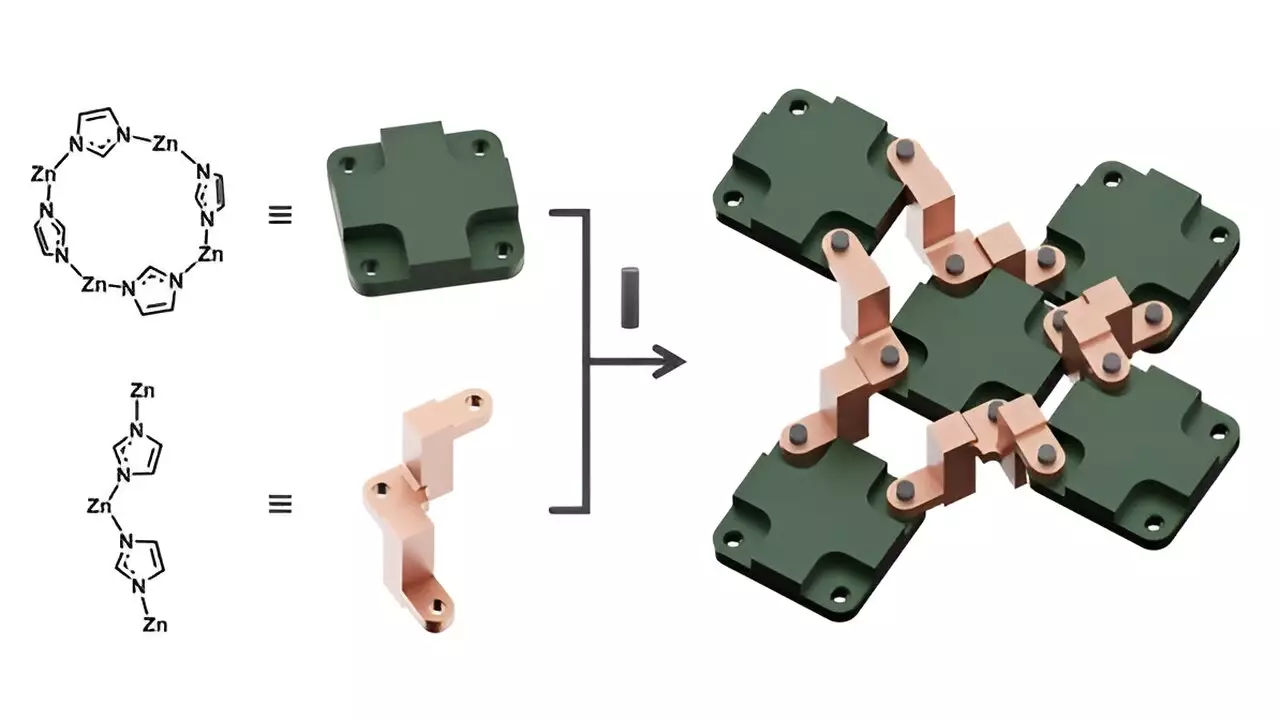In an era where technological innovation has become the backbone of advancement, the developments occurring at the molecular scale are nothing short of revolutionary. Researchers from the Ulsan National Institute of Science and Technology (UNIST) have embarked on a groundbreaking venture that merges chemistry with mechanical engineering, resulting in systems that mirror complex machinery at an incredibly tiny scale. This focus on molecular-scale devices is critical as we push the limits of data storage, nanotechnology, and beyond—a domain where precision and efficiency are paramount.
Engineering Marvels: Zeolitic Imidazolate Frameworks
The recent work led by Professor Wonyoung Choe and his team delves into the creation of zeolitic imidazolate frameworks (ZIFs), which serve as a foundation for these novel molecular machines. By integrating essential mechanical components into existing metal-organic frameworks (MOFs), the team has crafted devices capable of executing highly precise nanoscale motions. This innovative approach not only challenges our understanding of molecular interactions but also provides insight into how we can harness nature’s mechanisms for technological feasibility. The complexity of these frameworks enhances their inherent capabilities, enabling behaviors previously thought unattainable at such small scales.
From Theory to Application: The Slider-Crank Linkage
One of the significant achievements in this study is the implementation of a slider-crank linkage—an idea rooted in classical mechanics that translates rotational movements into linear actions. This method of converting mechanical motion showcases the harmony between traditional engineering principles and modern scientific inquiry. Through single-crystal X-ray diffraction, the research team confirmed the existence of this linkage structure within the ZIF, marking a pivotal moment where theoretical concepts in mechanics can be effectively applied to molecular structures. The implications of this verification are immense, paving the way for advancements in mechanical properties governing fluid dynamics and material flexibility.
Elasticity as a Game-Changer
Perhaps most exciting is the revelation that these new ZIFs exhibit unprecedented elasticity and mechanical flexibility. This feature is not merely a byproduct but a critical aspect that could redefine applications in data storage and nanotechnology. The ability to respond dynamically to environmental changes, such as temperature and solvation, hints at a new class of smart materials capable of adapting to different functional demands. Such adaptability could transform industries, allowing for advances in portable electronics and data systems that require robust yet flexible support structures.
Building Blocks for Future Innovations
The exquisite mechanical properties of these frameworks suggest that we are on the cusp of developing nanomaterials that can assemble and reassemble to execute intricate tasks. As Professor Choe noted, the implementation of machine-like movements at the molecular level stands to unlock new avenues for research and material science, yielding breakthroughs that extend well beyond conventional applications. With the ability to manipulate molecular structures, we are primed to enter a new frontier in technology. This research not only highlights the importance of interdisciplinary collaboration between chemistry and engineering but also signals a mature approach toward understanding and leveraging the molecular intricacies that govern our physical world. The excitement lies in our potential to engineer devices that not only function effectively but also surpass our current innovations, propelling us into an electrifying future of nanotechnology.


Leave a Reply